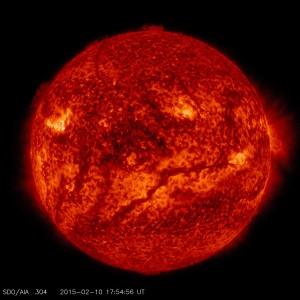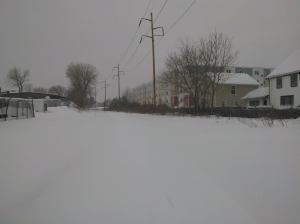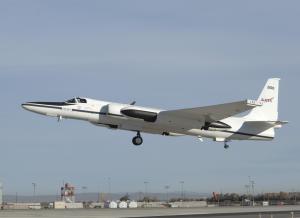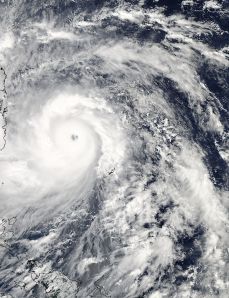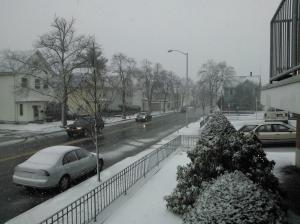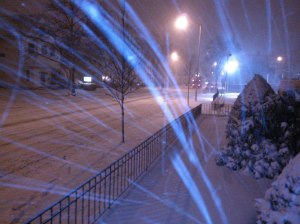It isn’t just Rep. Cantor that has a problem helping people with a disaster, there’s also Fox News (via here):
Today the NWS justifies itself on public interest grounds. It issues severe weather advisories and hijacks local radio and television stations to get the message out. It presumes that citizens do not pay attention to the weather and so it must force important, perhaps lifesaving, information upon them. A few seconds’ thought reveals how silly this is. The weather might be the subject people care most about on a daily basis. There is a very successful private TV channel dedicated to it, 24 hours a day, as well as any number of phone and PC apps. Americans need not be forced to turn over part of their earnings to support weather reporting.
Can those private companies send out warnings to everybody such as tornado warnings)? It’s also interesting that it’s not noted in the article that the National Weather Service provides information (such as satellite imagery) to these private weather services free.
Ron Paul (via here), of course, tops them all:
After a lunch speech today, Ron Paul slammed the Federal Emergency Management Agency, or FEMA, and said that no national response to Hurricane Irene is necessary.
“We should be like 1900; we should be like 1940, 1950, 1960,” Paul said. “I live on the Gulf Coast; we deal with hurricanes all the time. Galveston is in my district.
Hmm, what happened in Galveston in 1900:
The Hurricane of 1900 made landfall on the city of Galveston in the U.S. state of Texas, on September 8, 1900.[1] It had estimated winds of 145 miles per hour (233 km/h) at landfall, making it a Category 4 storm on the Saffir-Simpson Hurricane Scale.[2] It was the deadliest hurricane in US history, and the second costliest hurricane in US history based on the US dollar’s 2005 value (to compare costs with those of Hurricane Katrina and others).
Umm yeah, that’s how we should respond to hurricanes. Paul wasn’t finished though:
“It’s a system of bureaucratic central economic planning, which is a fallacy that is deeply flawed,” the Texas congressman said on “Fox News Sunday.” “FEMA has been around since 1978. It has one of the worst reputations for a bureaucracy ever.”
The libertarian-minded Paul acknowledged that FEMA can’t be replaced overnight, yet he claimed the agency is wasteful and funnels money to contractors instead of the victims of natural disasters.
Should FEMA need emergency funding, Paul told host Chris Wallace he would vote against additional appropriations.
Gov. Christie (New Jersey):
TAPPER: Is there anything that the state of New Jersey needs from the federal government that you’re not getting?
CHRISTIE: Not at this point, Jake. We have FEMA representatives here at the — at the Regional Operations and Intelligence Center, been working with us. I’m going to be calling Secretary Napolitano in an hour or two to make a further request of additional needs. But so far, FEMA has been very responsive. I spoke to Secretary Napolitano in the last 24 hours. She’s offered to do whatever she needs to do to help us out here in New Jersey. She knows how hard we’re going to be hit. So right now, the cooperation between New Jersey and FEMA has been great, and I’m going to be calling Secretary Napolitano shortly to ask for some more help.
Gov. O’Malley (Maryland):
“The good news is this: because of FEMA’s partnership, because people listened, we were able to avoid any big problems in terms of threats to the public, to lives and to public safety,” O’Malley told host David Gregory.
He returned to the subject later in the interview, praising the work of FEMA Director Craig Fugate, Homeland Security Secretary Janet Napolitano and President Obama.
“They have been excellent,” O’Malley said. “They have been with us since day one, and actually, before the storm arrived, they were here, and it’s worked really, really well. This is a much better FEMA than the olden days.”
Now O’Malley is a Democrat, but Christie is not. Maybe it’s only when Republicans are President that FEMA has a bad reputation?

